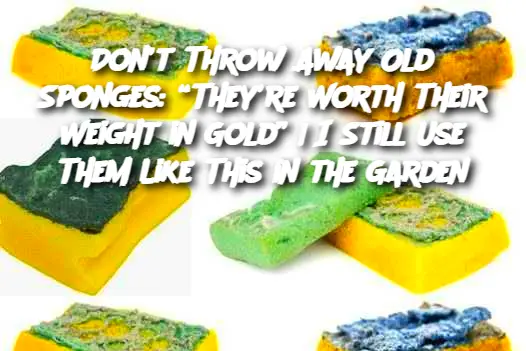
Don’t Throw Away Old Sponges: “They’re Worth Their Weight in Gold” | I Still Use Them Like This in the Garden
Use whole sponges as kneeling pads while planting or weeding.
Stick sponges into the bottoms of hanging baskets to reduce watering frequency.
Shred sponges and mix into compost to help retain moisture.
Place sponge strips under heavy pots to prevent scratching surfaces and improve drainage.
Frequently Asked Questions:
Q: Can I use any kind of sponge?
A: Avoid sponges with chemical scrubbing pads or added cleaners. Plain cellulose or polyurethane sponges are best.
Q: Will old sponges attract mold?
A: As long as they’re cleaned and allowed to dry before use, sponges should not attract mold. Good drainage in your soil will also help.
Q: How do I know when to replace them?
A: If the sponge starts disintegrating or gives off an odor, it’s time to remove and replace it.
Q: Can sponges affect plant growth?
A: On the contrary, they improve moisture retention and drainage, helping your plants grow healthier with less effort.
—
Would you like this article formatted as a printable PDF, blog post, or infographic?